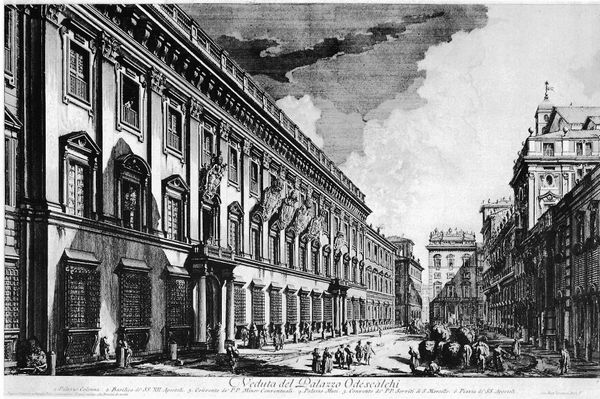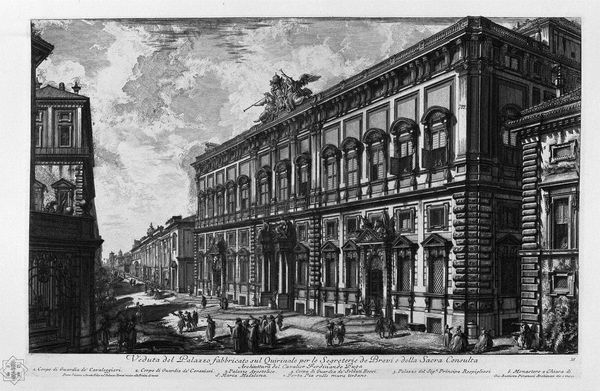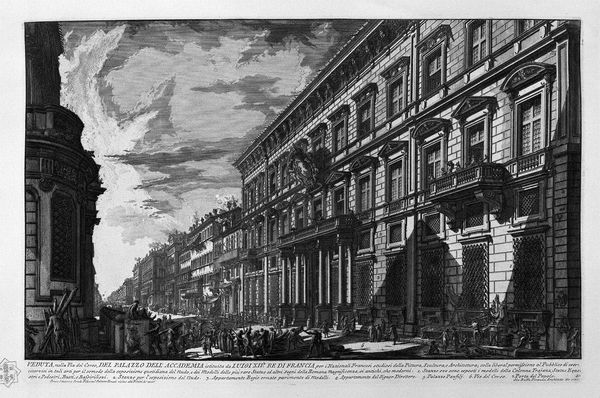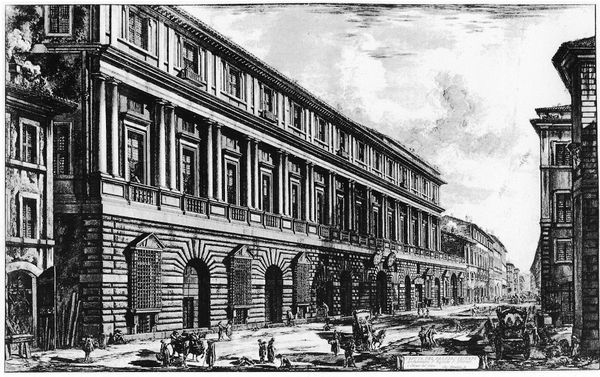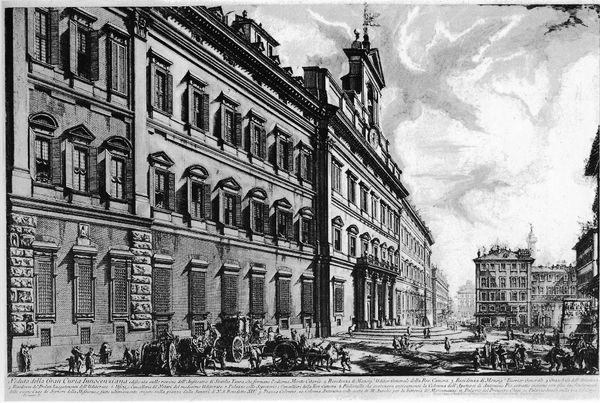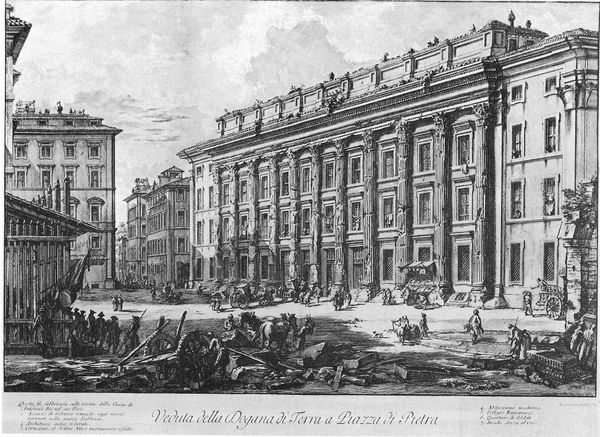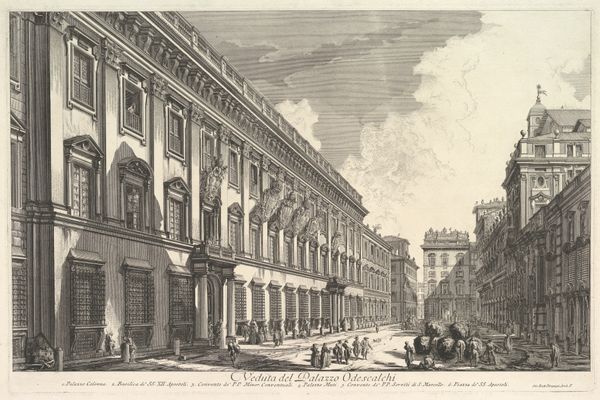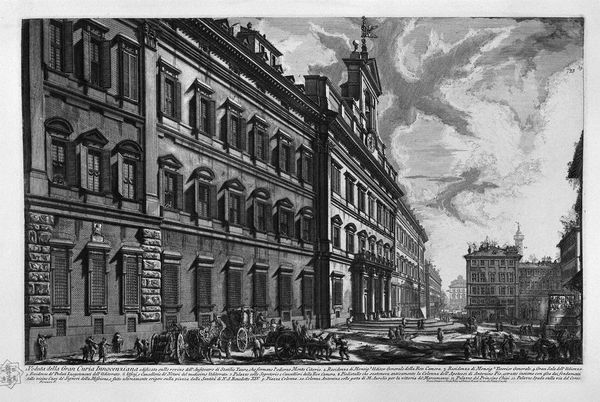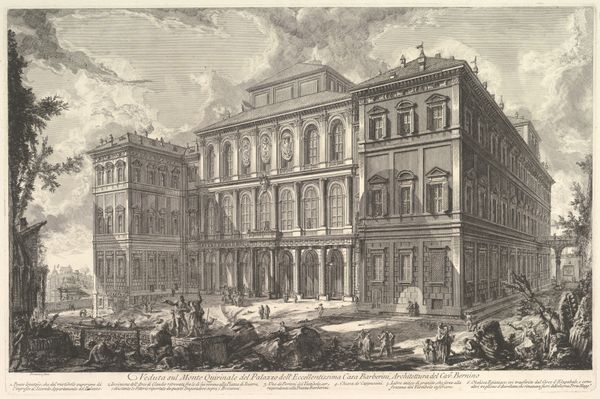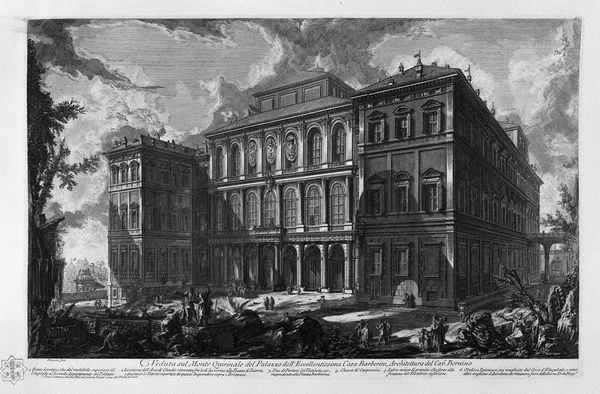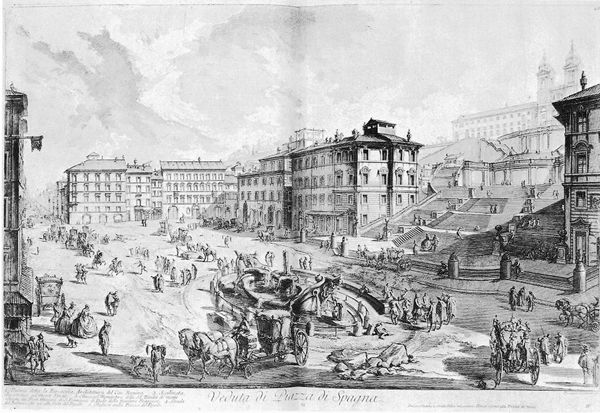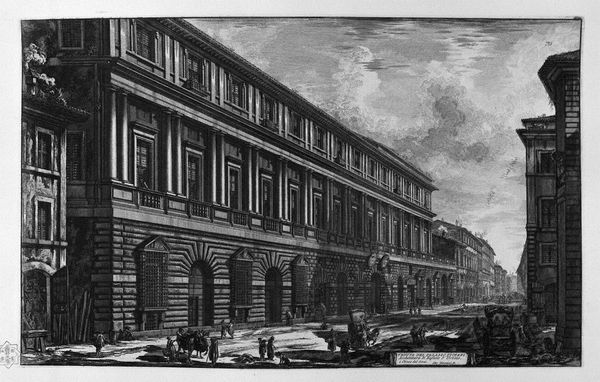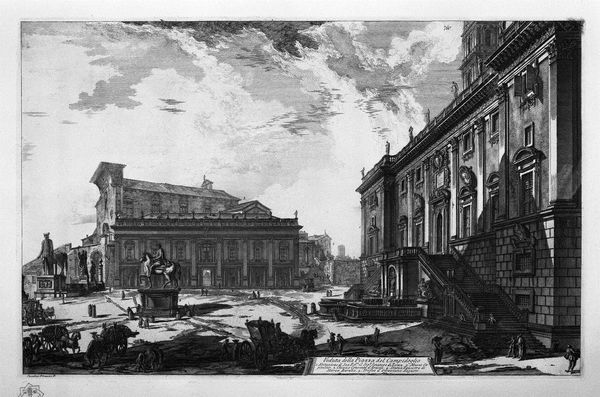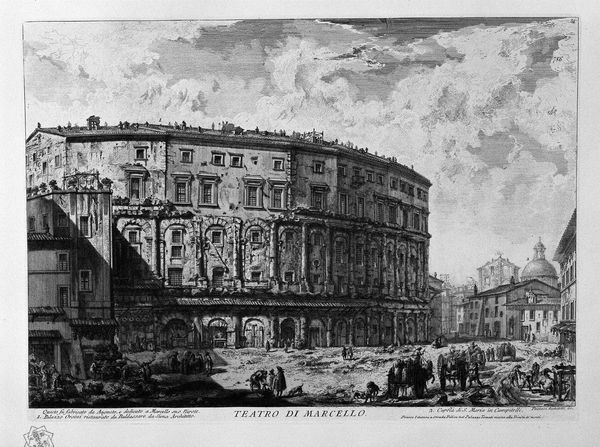
drawing, etching, architecture
#
architectural sketch
#
drawing
#
architectural landscape
#
cityscape
#
etching
#
urban cityscape
#
romanesque
#
architecture drawing
#
cityscape
#
history-painting
#
architecture
Copyright: Public domain
Editor: This etching, titled "The Corso in Rome," attributed to Giovanni Battista Piranesi, presents a bustling cityscape. I’m immediately drawn to the stark contrast of light and shadow; it gives the scene a palpable energy. What’s your take on this, considering the medium? Curator: What I see is a careful depiction of architectural materials and, critically, the labor that went into both their construction and representation. Piranesi, through the very act of etching – a reproducible process – is documenting not just the *appearance* of Rome, but also the physical reality of its creation and, subsequently, its consumption as an image. Consider the socioeconomic implications here. Editor: You're focusing on the process of etching itself. How does that relate to the social context of the time? Curator: Absolutely! Etchings, like this one, became commodities. They circulated widely, democratizing access to the grandeur of Rome. It becomes less about elite patronage and more about a market for imagery. The labor involved, both in the construction of the city and the creation of the prints, fuels that economy. Editor: So, the print isn’t just about the beauty of Rome but also about its accessibility through a kind of early mass production. That’s a shift in perspective for me. Curator: Precisely. We should ask ourselves how the consumption of these images reflects the socio-economic dynamics of 18th-century Europe, in particular its fascination with the Classical world and burgeoning industrialism. It speaks volumes. Editor: Thinking about it that way, the image is not static, it's actively participating in the circulation of value and ideas. Curator: Indeed, this challenges our traditional notion of art existing in a vacuum. It highlights the crucial role of material processes and market forces in shaping both artistic production and reception. Editor: I will never see this artwork in quite the same way again.
Comments
No comments
Be the first to comment and join the conversation on the ultimate creative platform.
